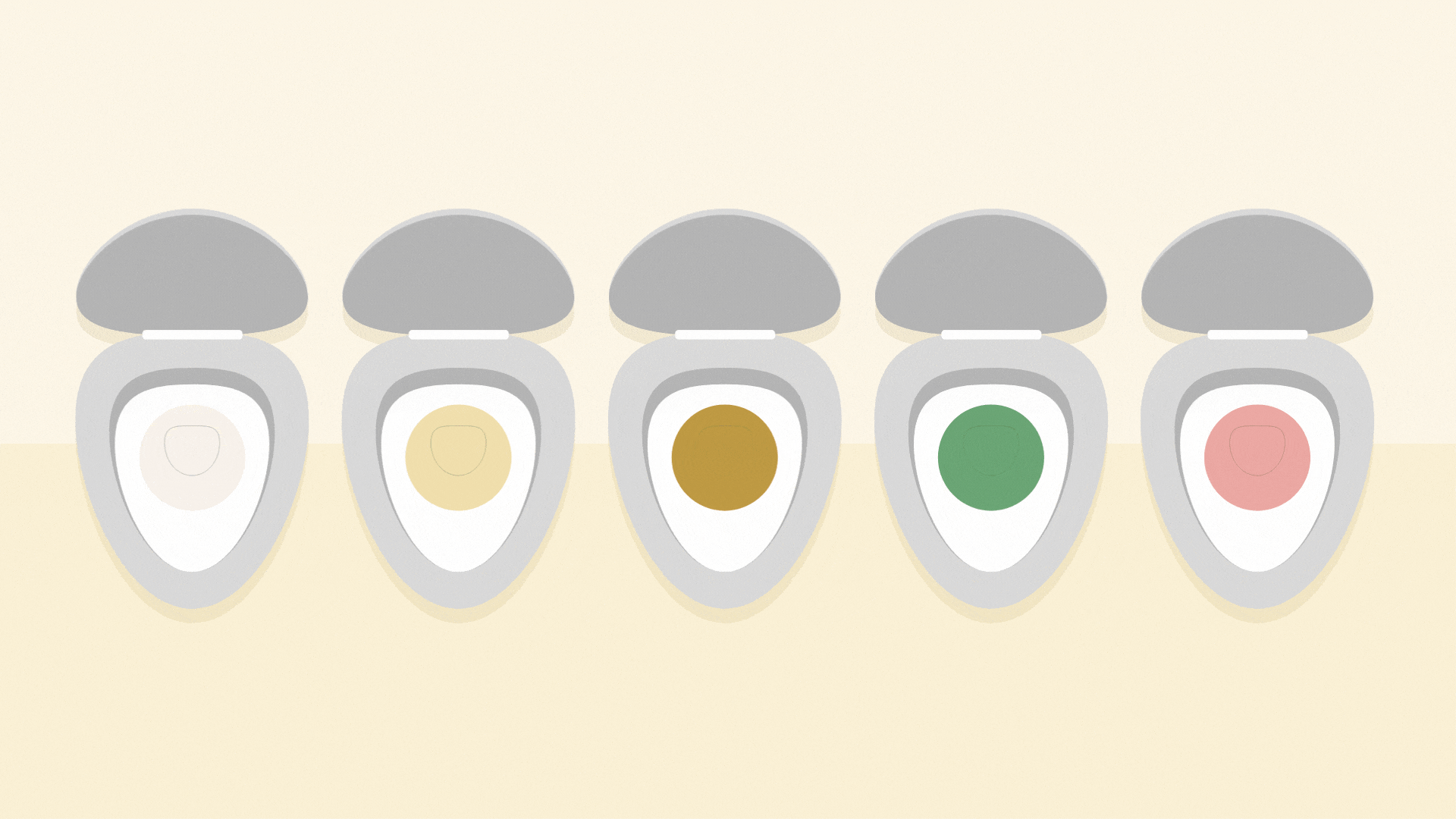If your pee isn’t its normal color, there may be a perfectly benign explanation — or it could be a cause for concern. Here’s a breakdown of what different colors may mean.
Clear
“In states of excessive hydration, there can be a decrease in blood levels of sodium, which can have an impact on brain function,” says Michael Whalen, MD, chief of urologic oncology at the George Washington University School of Medicine and Health Sciences in Washington, D.C.
If your urine is consistently clear but you aren’t drinking a lot of water, it could be a sign that you have a problem with your kidneys or diabetes.
Pale Yellow
Pale or transparent yellow urine is a sign that you have been hydrating appropriately with water or other fluids.
“Ideally, urine should be clear or a pale yellow color. That means you’re well hydrated and everything is working properly,” says Jairam Eswara, MD, chief of urology at Tufts Medical Center in Boston.
Dark Yellow or Amber
Orange
Pink or Red
Urine may become pink or red after eating certain foods, such as beets, rhubarb, and blackberries.
Medications including rifampin (Rifadin), phenazopyridine (Pyridium), and laxatives containing senna can also give urine a reddish-orange tint.
Red or pink urine could also mean there’s blood in your urine. “The most concerning appearance is when there’s blood in the urine, even if it’s just a little bit pink,” says Dr. Eswara.
Blood in urine can be caused by:
- Urinary tract infections (UTIs)
- Prostate problems
- Kidney stones or cysts
- Kidney or bladder cancer
- Noncancerous tumors
- Lead or mercury poisoning
It’s also possible for menstrual blood to appear to cause red or pink urine, though the blood is actually coming from the uterus. “It’s important to distinguish whether it’s gynecologic bleeding or urologic bleeding” in women of reproductive age, says Dr. Whalen.
Sometimes, hard exercise like long-distance running can cause blood in the urine. If your urine is red, you should contact your doctor immediately.
Blue or Green
Blue or green food dyes may color your urine because they can’t be absorbed by your body. The same is true for dyes used in certain kidney and bladder tests.
Drugs including amitriptyline (Elavil), indomethacin (Indocin), cimetidine (Tagamet), triamterene (Dyrenium), and propofol (Diprivan) can cause blue or green urine.
Supplements containing certain B vitamins can give your urine a green tint.
Blue diaper syndrome, also called familial benign hypercalcemia, is a rare disorder that can cause blue urine, starting shortly after birth. It develops when the intestines incompletely break down the dietary nutrient tryptophan.
Brown or Dark Orange
In some cases, severe dehydration can make your pee so dark it appears dark orange or brown. Drink fluids right away if this is the case.
At this level of dehydration, “you might notice that your mouth is dry, or you’re feeling kind of faint,” says Eswara. “If the brown color doesn’t improve with hydration, seek medical attention.”
Foods like fava beans, aloe, and rhubarb can also turn your urine brown.
Certain malaria medicines, antibiotics, laxatives containing senna, muscle relaxants, and statins can cause dark urine that may appear brown.
Liver and kidney diseases, a urinary tract infection, or a muscle injury from intense exercise can also lead to urine with a brownish tint.
Porphyria, a rare disorder that affects your skin and nervous system, can cause rust-colored or brown urine.
“Brown urine can indicate old blood from somewhere in the urinary tract,” says Whalen, and should prompt a doctor visit if it persists.
Dark Brown or Black
Dark brown urine can occur if you’ve been eating a lot of foods that can turn urine brown, such as fava beans, aloe, and rhubarb.
Dark brown urine can be a sign of hemorrhage, or bleeding, inside your body.
Cloudy
Urine with a milky appearance can indicate the presence of bacteria or mucus in your urine, which can happen due to a UTI or certain other health conditions.
“If your urine is particularly foamy, that could indicate protein in the urine,” says Eswara. This could be a sign of kidney problems, particularly if someone has diabetes, he says.
Read the full article here




